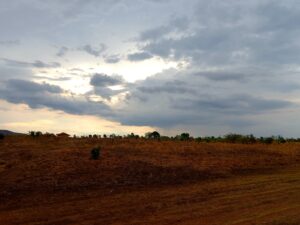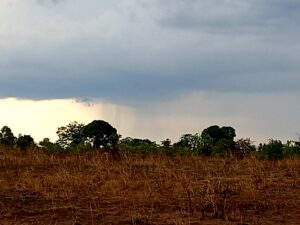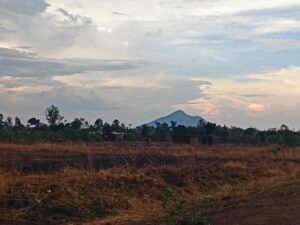Rains at Advent
There fell today the first heavy rains: later than last year, so all the more welcome. November is an exercise in endurance: a succession of days that seem always the same under a burning sky, when that part of Malawi which is not European has the good sense to attempt as little of purposeful activity as possible. The inundation is slow in the preparation but spectacular in the release. Indeed, the image of the San is of a great bull (xoro), stalking the heavens, his legs the rain storms that move over the plain, the thunder his bellow. The rains, when they fall, undo the spell cast by the months of drowth, and the land, it is ever wonderful to behold, turns green overnight. Life is restored.
It is a season peculiarly appropriate to Advent, especially as conceived in the liturgical use of Isaiah 45:8.
Rorate, coeli, desuper, et nubes pluant iustum; aperiatur terra, et germinet Salvatorem, et justitia oriatur simul: ego Dominus creavi eum.
Drop down dew, ye heavens, from above, and let the clouds rain the just: let the earth be opened, and bud forth a saviour: and let justice spring up together: I the Lord have created him.
This verse appears in the Mass (inc. the eponymous Rorate Mass), the Divine Office and the Advent Prose.
There is a story told among the Chewa, that the first man and first woman, together with all beasts, and God himself, came down to earth, at Kaphirintiwa, amidst a thunder storm. Why not also the ‘just one’ and the ‘saviour’, which figures Christ?
Neither in the Middle East nor in Northern Europe is Advent a time of sudden rain. The image is, of course, transferable from other months and other climates, but it is noticeable how much better works, say, the language of the Easter liturgy with regard to Spring in the northern hemisphere.
It is an attractive idea that the association of Isaiah 45:8 to Advent should reflect a memory of a country whose climate is divided so abruptly between dry and rainy seasons. Not Malawi, of course, but where?



